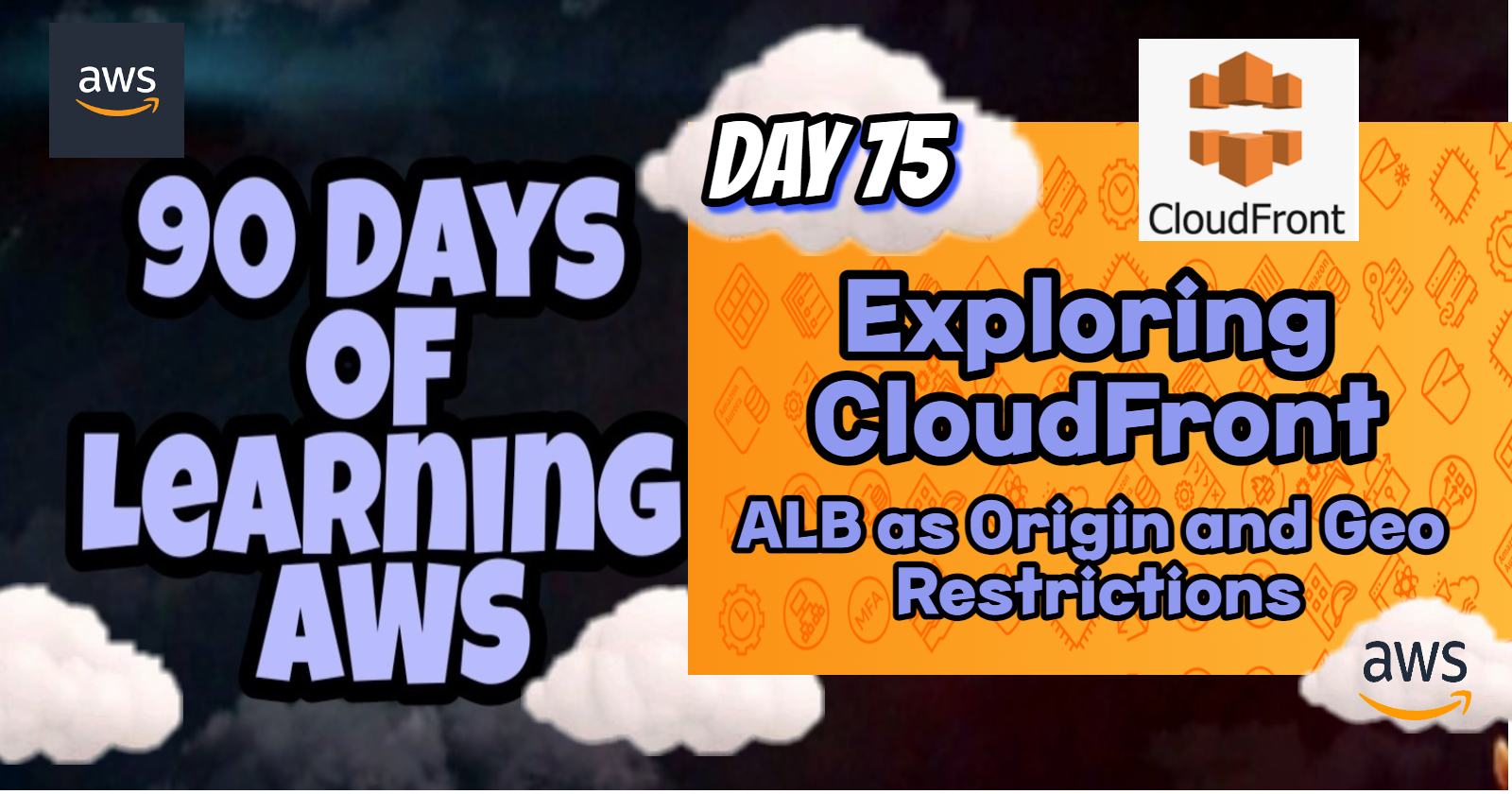Exploring CloudFront: ALB as Origin and Geo Restrictions
 Shailesh
Shailesh
Introduction
Amazon CloudFront is a powerful content delivery network (CDN) service that integrates seamlessly with AWS services, providing developers with a highly reliable and scalable way to deliver content to end-users with low latency. In this blog post, we'll delve into two advanced CloudFront features: using an Application Load Balancer (ALB) as an origin and setting up Geo Restrictions. We'll explore what these features are, their key use cases, and how they can enhance your content delivery strategy.
CloudFront ALB as Origin
🔷What is it?
CloudFront allows you to use an Application Load Balancer (ALB) as an origin server. This means that CloudFront can distribute requests across multiple servers behind the ALB, providing a scalable and highly available solution for delivering dynamic content.
🔷Key Features:
Scalability: ALB distributes incoming application traffic across multiple targets (e.g., EC2 instances) in one or more Availability Zones, which enhances your application's availability and reliability.
Security: You can leverage ALB's integration with AWS WAF (Web Application Firewall) to protect your web applications from common threats.
Customization: CloudFront's support for ALB as an origin allows you to customize cache behaviors, enabling advanced routing and content delivery strategies.
🔷Use Cases:
Dynamic Content Delivery: When delivering dynamic, non-cacheable content such as personalized web pages or API responses, using an ALB as the origin with CloudFront ensures that the content is delivered quickly and securely.
Microservices Architecture: In a microservices architecture, different services might be hosted behind multiple ALBs. CloudFront can be configured to route requests to the appropriate ALB, providing a unified front-end for your users.
🔷Real-Life Example:
Consider a scenario where a global e-commerce platform is hosting its web application using multiple EC2 instances behind an ALB. By using CloudFront with ALB as the origin, the platform ensures that users worldwide experience fast load times, even during peak traffic periods. The ALB efficiently distributes traffic across instances, while CloudFront caches static assets close to the users.
CloudFront Geo Restrictions
🔶What is it?
Geo Restrictions, also known as geo-blocking, is a feature of CloudFront that allows you to restrict access to your content based on the geographic location of your users. This is useful for complying with content distribution laws or managing content access in specific regions.
🔶Key Features:
Granular Control: Define allow or block lists based on countries, ensuring that your content is accessible only where it should be.
Compliance: Helps meet regulatory requirements by blocking content in regions where you don't have distribution rights.
User Experience: Tailor content availability to specific regions, offering a localized experience to your users.
🔶Use Cases:
Content Licensing: If you have rights to distribute content only in certain countries, geo restrictions can help you comply with those licensing agreements.
Regulatory Compliance: For example, if your application deals with data that cannot legally be accessed in certain countries, geo-blocking ensures that you stay compliant with international regulations.
🔶Real-Life Example:
Imagine a streaming service that has different licensing agreements for different regions. Using CloudFront Geo Restrictions, the service can block access to certain shows or movies in regions where they don't have distribution rights, while still providing access to the rest of their library.
Conclusion💡
Amazon CloudFront's integration with ALB as an origin and its Geo Restrictions feature are powerful tools for optimizing content delivery. Whether you're managing dynamic content delivery with ALB or ensuring compliance with geo-blocking, these features provide the flexibility and control needed to meet your application's specific requirements.
Stay tuned for more AWS insights!!⚜ If you found this blog helpful, share it with your network! 🌐😊
Happy cloud computing! ☁️🚀
Subscribe to my newsletter
Read articles from Shailesh directly inside your inbox. Subscribe to the newsletter, and don't miss out.
Written by

Shailesh
Shailesh
As a Solution Architect, I am responsible for designing and implementing scalable, secure, and efficient IT solutions. My key responsibilities include: 🔸Analysing business requirements and translating them into technical solutions. 🔸Developing comprehensive architectural plans to meet organizational goals. 🔸Ensuring seamless integration of new technologies with existing systems. 🔸Overseeing the implementation of projects to ensure alignment with design. 🔸Providing technical leadership and guidance to development teams. 🔸Conducting performance assessments and optimizing solutions for efficiency. 🔸Maintaining a keen focus on security, compliance, and best practices. Actively exploring new technologies and continuously refining strategies to drive innovation and excellence.